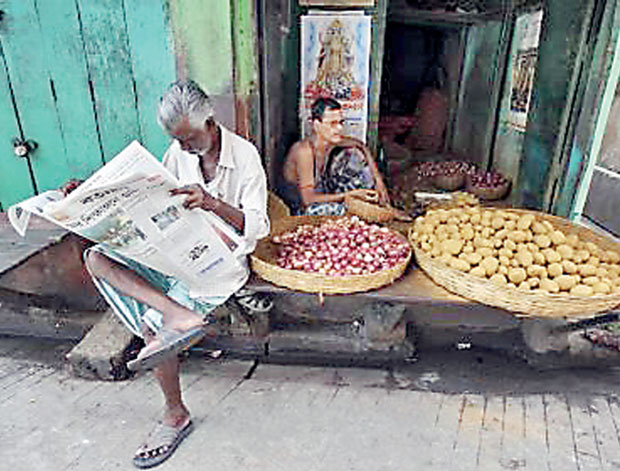31 Jan 2017 - {{hitsCtrl.values.hits}}

 One of the most widely read business newspapers in India turned broadsheet on 12 September 2016, defying the trend in developed countries to go digital only, creating more space for editorial and advertising content.
One of the most widely read business newspapers in India turned broadsheet on 12 September 2016, defying the trend in developed countries to go digital only, creating more space for editorial and advertising content.
This example shows the stark difference in market conditions for newspapers in India compared to the United States, the United Kingdom and Australia.
Registered newspapers
There are over 16,000 newspapers and about 94,700 periodicals listed with the Registrar of Newspapers for India, an increase of nearly 5,400 publications in 2015–16. Over 610 million copies of these publications were circulated between April 2015 and March 2016. The largest circulated daily — Anand Bazar Patrika (Bengali) — distributes 1.15 million copies, while the largest circulated multi-edition daily was Dainik Bhaskar (Hindi) with over 6.6 million copies distributed. The second largest circulated daily was Hindustan Times (English) in Delhi with over 992,000 copies read by many more readers and the largest multi-edition English daily was The Times of India with 4.4 million copies distributed. Publications in Hindi, India’s national language, claimed the highest circulation with 314.5 million copies per day.
Rising literacy rates and aspirations among the information-hungry younger generation has meant that newspapers remain a staple for most Indian households. As a result, Indian newspapers have healthy advertising revenue from businesses wishing to reach the growing middle class in India.
The print news media in India have also expanded their market by syndicating national content with regional news to produce multi-editions in different parts of India, and by expanding their content diversity with supplements on sport, education, entertainment and lifestyle. According to a report by India Ratings and Research, vernacular or local language print media will grow at 10–12 per cent in 2017.
Still in tact
While market conditions in developed countries mean that advertising revenue and per capita sales of newspaper hard copies have been drying up over the past two decades, the Indian business model of print media is still intact. Newspapers in India are sold for a few cents a copy, making them a very affordable commodity for the masses. Print media contributes a significant portion to the total advertising revenue in India, accounting for over 41 per cent in 2015, whereas television contributed 38 per cent and digital accounted for 11 per cent of total advertising revenue.
According to the India Brand Equity Foundation, the Indian advertising industry is worth 630 billion rupees (US$9.3 billion). In 2017, India’s advertising market will continue to be among the world’s fastest growing, with estimates of 12.5 per cent growth due to low interest rates and increasing demand for goods and services.
But the Indian print media industry is not immune to the effects of the internet and mobile media on its business.
In 2016, there were over 450 million internet users in India and about a billion mobile subscribers. A number of new news providers are vying for viewers’ attention. Many of these are either online websites of the so-called ‘legacy media’ or start-up news sites, with some for-profit while others are citizen and non-profit media enterprises. These start-ups recognize that internet and mobile use is rapidly increasing in India and therefore have amobile-first approach and prioritise social media distribution. But these start-ups suffer the same impediments as their counterparts in developed nations: relatively lower rates of advertising and online consumers’ unwillingness to pay for news.
A survey of about 3,000 online Indian newspaper readers in 2014 found that 90 percent of news consumers were still reading printed newspapers. Similarly, Indian consumers continued to read print newspapers for their current news coverage even after theexpansion of television.
This is not to say that the print media is not aware of the coming avalanche of the internet, with most bigger media houses investing in multiple media platforms, implementing aggressive social media and digital integrated newsroom strategies, targeting niche audience markets and cutting costs with innovative production processes.
Online impact
The Indian print media might be safe for the coming few years and it has been preparing for the possibility of its traditional business model being adversely affected by the movement of readers online. For now, the industry continues to enjoy healthy advertising revenue and growing readership. But as soon as the country can clear up its infrastructure impediments of disrupted electricity, congested telecommunication networks and uneven internet speed, the disruption from online sources will become a serious threat to the Indian print media. (East Asia Forum)
(Usha M. Rodrigues is Senior Lecturer in Journalism at Deakin University)
09 Jan 2025 3 hours ago
09 Jan 2025 4 hours ago
09 Jan 2025 7 hours ago
09 Jan 2025 7 hours ago
09 Jan 2025 8 hours ago